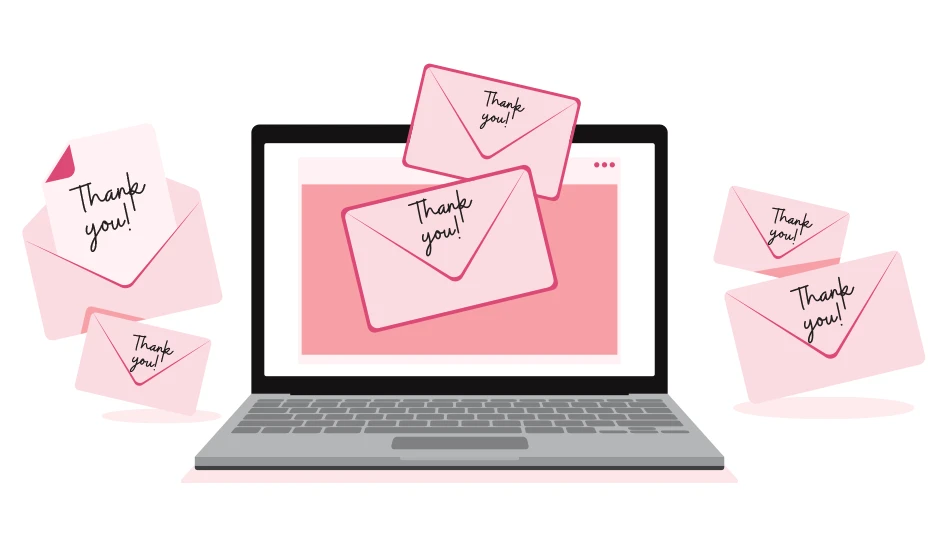

Turn off your new message alerts.
Most people visibly flinch when I suggest this. The problem is that every time a new email alert pings on your computer or smartphone, you’re yanked away from what you were just doing.
I know, I know – you can’t do your job without email. Of course you can’t. However, every time your attention is diverted by a new email alert, you become increasingly unproductive.
Be brave. Take the step. Turn off the alert and remove this self-inflicted distraction. Quiet down your space by 99 pings a day. Now, let’s find a better way to manage the inbox.
Process email in batches
Get outside the box – the inbox. Go to your email inbox periodically throughout the day, as regularly as necessary to remain effective and responsive.
Start by checking it every 15 minutes, and then stretch it out to 20 minutes, before finally heading out to 30 minutes. Some people have even gone a whole hour without checking their email. Imagine, an hour without checking email.
Don’t worry. No matter the interval, there will always be new emails to read. That’s the problem with emails – they’re constantly arriving.
Once you’ve arrived back at your inbox, read and sort (mentally) all the new emails in one continuous behavior – just like how you process your physical mail when it arrives each day. The point is that processing is a singular effort and should be started and completed in one effort to keep it most efficient.
Only one subject per email
Let’s turn our attention to a couple of things we can do to make the emails we send more efficient, which includes how we handle the subject line of emails. Putting multiple subjects into a single email greatly increases the risk of misunderstandings and mistakes. People recall things differently and mix subjects up.
When you commit to a one-subject-per-email policy, you will increase efficiency and receive responses that make sense and are pertinent to the information you are seeking.
One subject per email also makes the email easier to find later, whether through a search function or a sort function. The single subject makes it easier to file, and it reduces the risk of inadvertently disclosing sensitive or confidential information by a downstream reader looking at the content related to the other subject in a multiple-subject email.
Craft good subject lines
Email subject lines are routinely underused, if not completely misused. Here are the top violations that are committed:
[ ] (blank subject line)
Hey, what’s up?
I was thinking
Urgent (or ASAP or HIGH PRIORITY!)
Thoughts?
Update
Well-crafted subject lines tell the reader what the email is about and how important it is.
You don’t need to create a naming convention for subject lines (i.e., a format for repeated use), though it helps.
You just need to leverage the space you have to give your reader a quick insight into the body of your email. For example:
Johnson Matter, #345365 –Activities in the Last 30 Days
XXX Strategic Marketing Project – Documents for Review
Create new appointments
This particular trick works best with Microsoft Outlook. Many people use email to coordinate events and exchange information about tasks and projects. Many of these messages taken back and forth contain valuable information about the event or task. To capture that content, most people cut and paste it from the email into a new appointment or task.
To save time, click on the email with the content you need and drag it over to the new appointment or task icon (whichever is applicable to your specific application) and release the mouse. The body of the email will be automatically copied into the comment area of the new appointment or task.
Minimize the use of reply all
Reply all has become the de facto icon to hit when replying to email. Based on interviews of email users I’ve spoken with, the thought is that everyone who’s on the list needs to receive the information being contributed. The second most popular reason for using reply all is a form of covering your bases.
The reality is that most people do not need to read the information you are contributing to the thread; only some of them do. The best practice here is to click reply and add back only those people who will benefit from the information you have to contribute. This will cut down on the total number of emails the other people on the thread receive.
Cutting down on the number of emails people receive has the obvious benefit of reducing the total number of emails they need to process. It also means they are less likely to accidentally delete an email they do need to read and address.
Get curated news on YOUR industry.
Enter your email to receive our newsletters.
Explore the June 2017 Issue
Check out more from this issue and find your next story to read.
Latest from Nursery Management
- The Growth Industry Episode 3: Across the Pond with Neville Stein
- Trends: Proven Winners 2025 perennial survey shows strong demand
- Online registration opens for the 2025 Farwest Show
- Sustainabloom launches Wholesale Nickel Program to support floriculture sustainability
- Plant breeding as an art
- Society of American Florists accepting entries for 2025 Marketer of the Year Contest
- American Horticultural Society welcomes five new board members
- Get to know Christopher Brown Jr. of Lancaster Farms








